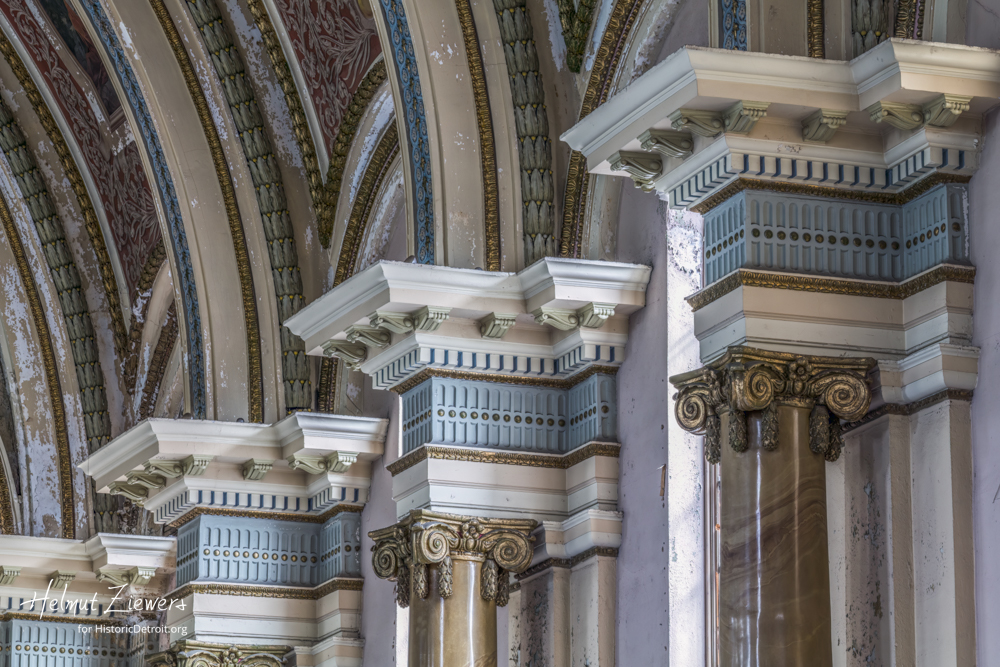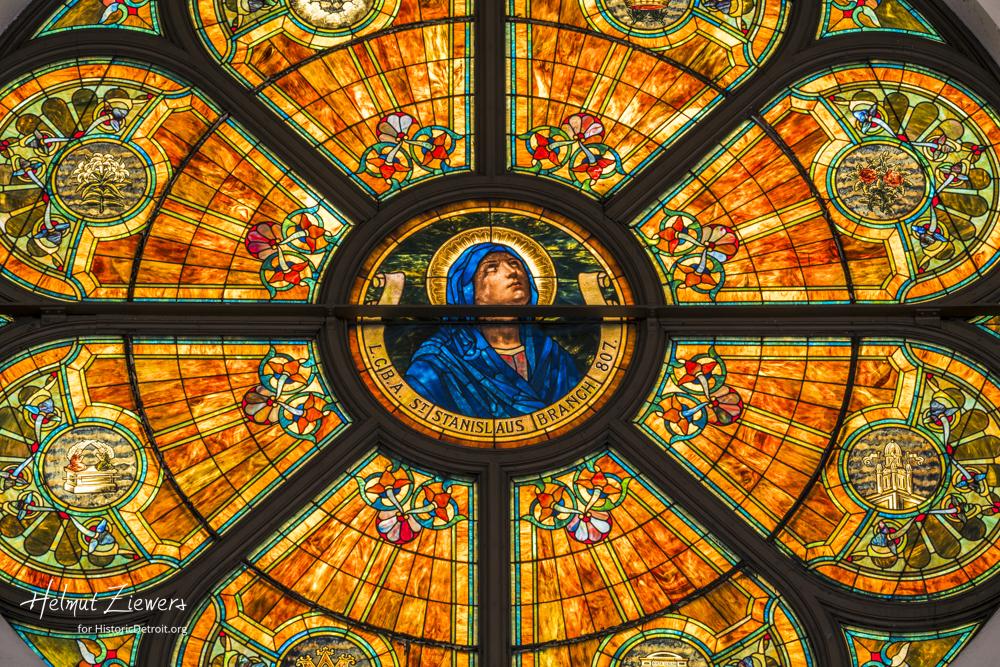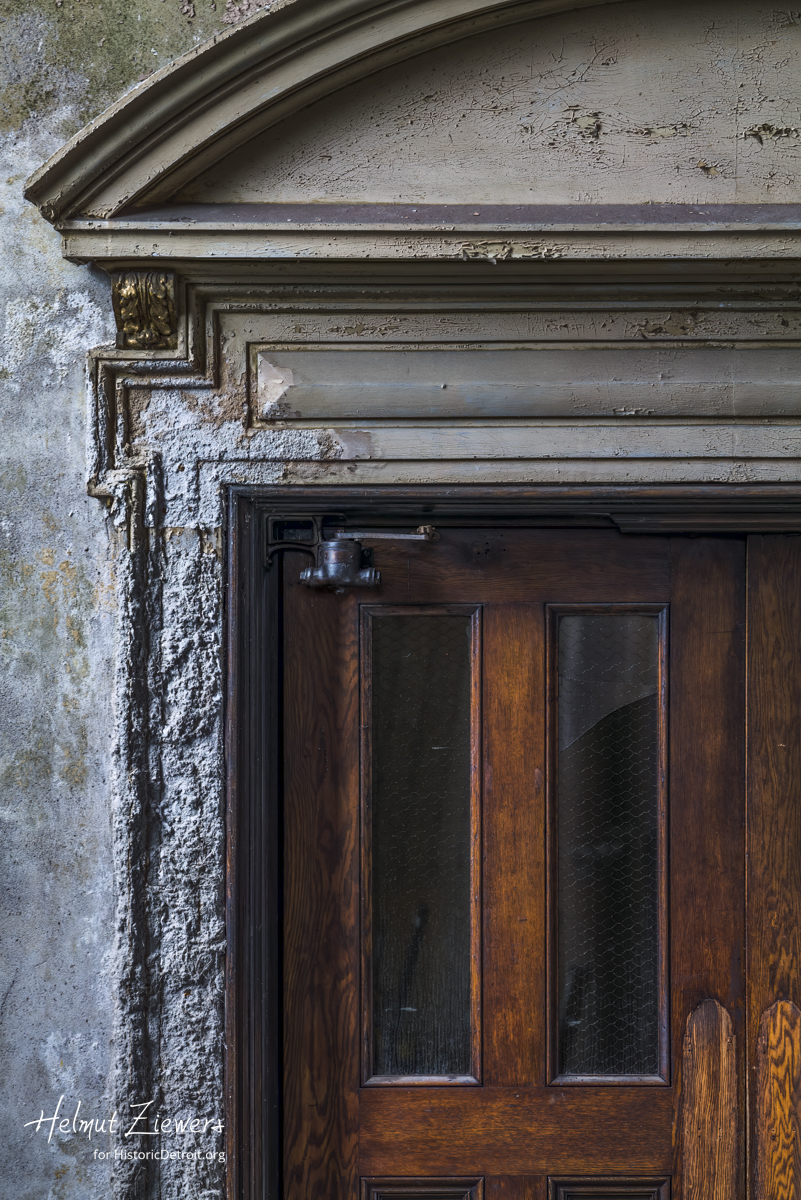St. Stanislaus Roman Catholic Church - Photos
St. Stanislaus Catholic Church

Plans for the church at the corner of Medbury and Dubois were drawn up in 1907. Ground was broken in August of 1911, it was finished in 2013.

The church was designed by architect Harry J. Rill with a baroque exterior.

The interior is reminiscent of European Baroque

The facade is in three sections. A two-tired, columned and pedimented center portion flanked by two towers.

A picture taken of the backside of the church after the Parish House was demolished in 2024.

The two towers are each topped by three open stages.

The nave is dominated by large round arches. Currently the church is being used for storage, under the watch of a full-time caretaker who lives inside the church (2023).

The Ceiling and Walls are decorated with murals

The south transept rose window depicts the Passion of Christ. Unfortunately the center piece is missing which depicted suffering Christ crowned with thorns. The eight large petals symbolize the Resurrection, for it was on the eighth day after his entry into Jerusalem that Christ rose from the grave.

Portrayed at the top of each petal (two of which are missing) is one of the instruments of Christ's Passion: (1)the column to which he was tied and scourged; (2)the crown of thorns; (3)the cross and reed, mock symbols of power; (4) the whip; (5) a ladder leaning against a cross; (6) hammer and nails; (7) the initials IHS; (8) and the initials IHS alone.

Beautiful murals line ceilings and walls

Evening sun hitting the the South transept rose window in 2022

The bays are articulated by engaged columns at the walls which support a cornice and ribs across the ceiling.

The church was rich in furnishings, statues, and painted decoration, reflecting the devotional practices of the Polish immigrant community.

Taken as a whole, the interior reflects very clearly the Beaux-Arts tendencies of the time. The expansive space has much more to do with the typical Beaux-Arts railroad station concourse than it does with spacial complexity of the Baroque churches which the facade emulates.

Most of the windows in the church are probably European and are richly painted in the Renaissance style.

The north transept window complements the rose in the south transept.

The inscription "L.B.C.A. St. Stanislaus, Branch 807," remembers the Ladies Benevolent Catholic Association, founded in 1902.

On the facade, the main door is a round-arched opening within columns and pediment. Above the door is a large arched window, and flanking the door and window two stories of engaged columns backed by pilasters on the wall form units of almost "buttress" character.

An example of the facade's status quo in 2022

Each tower continues above the first floor cornice to provide a base for two masonry stages with arched openings...

...and a terminating copper stage, circular with arched openings and a dome.

In 1990 the church was sold to Samuel Koontz, an organist who planned on converting the buildings into a recital hall and facility for rehabbing pipe organs. Unfortunately he passed away two years later.

As of 2022, some of the pews are still present and in rather good condition.

One last view from the choir section

St. Stanislaus from a distance in Nov. 2023

St. Stanislaus from a distance in Nov. 2023